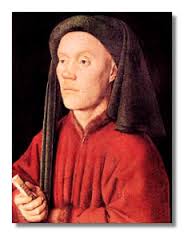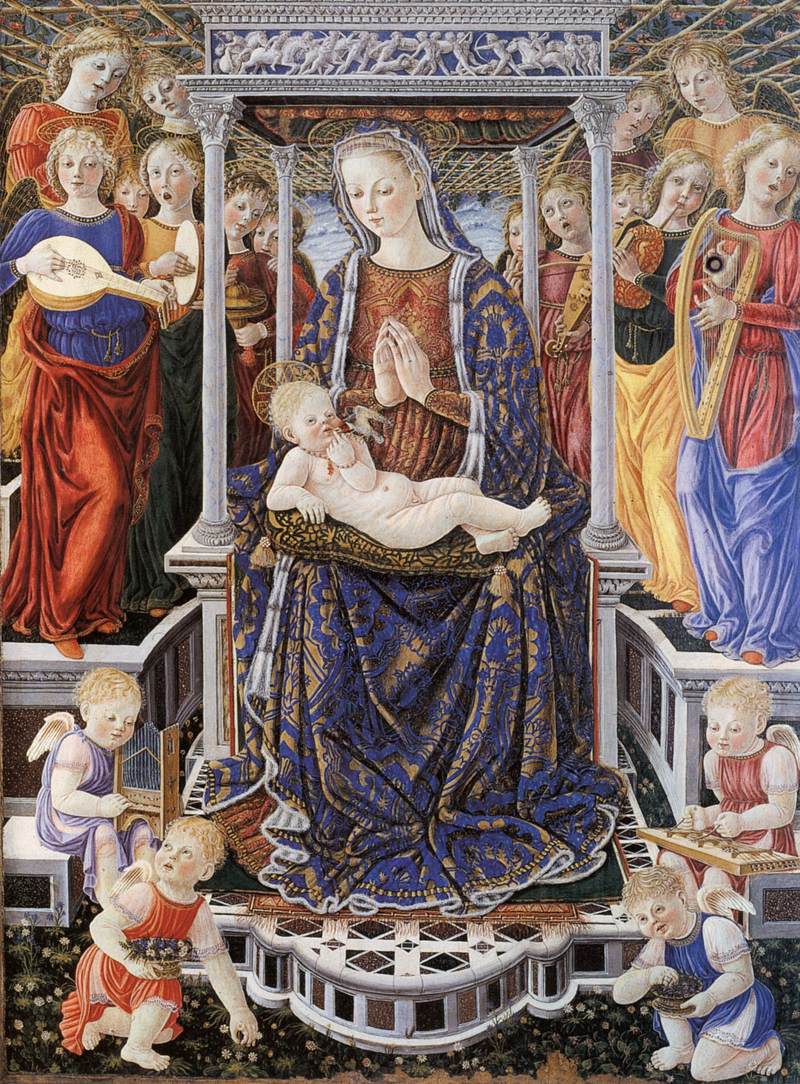December 30, 2013.End of 2013.Throughout the year we wrote about composers whose birth dates were lost in subsequent centuries.Most of them came from the early Renaissance period: by the time of the Baroque record keeping had greatly improved.We’d like to finish 2013 with a mention of two more composers who, if not very well known today, have greatly affected the course of musical history.
Gilles Binchois was born around 1400 in the city of Mons, which is now in Belgium and back then was the capital of the County of Hainaut.It later became part of the Duchy of Burgundy.During the Hundred Years’ War the Burgundians fought on the side of the English, and at some point even captured Paris. It’s known that around 1425 Binchois was in Paris serving William de la Pole, earl of Suffolk and one of the English commanders during the War.Around 1430 Binchois joined the court chapel of Philip the Good, the Duke of Burgundy and stayed there for many years.Philip loved the music and in addition to Binchois hired another famous composer, Guillaume Dufay.Philip didn’t have a permanent capital and moved his court between the palaces in Brussels, Bruges, Dijon and other cities of the Duchy; Binchois most likely traveled with the court.Eventually he retired to Soignies, just outside of Mons.He died in 1460.Binchois was considered the finest melodist of the 15th century, although some might argue that this honor belongs to John Dunstaple, and was, with Guillaume Dufay, the most significant composer of the early Burgundian (Franco-Flemish) School.
Here is his song (rondeau) Dueil angoisseux, or Anguished grief.For the text Binchois used a poem by Christine de Pizan, an Italian poet (she was born in Venice in 1365) who mostly worked in the courts of the French and Burgundian dukes.It’s performed by the eponymous ensemble, Ensemble Gilles Binchois.And here is another chanson, Triste plaisir et douloureuse joye (Sad pleasure and sorrowful joy).The Swedish mezzo/contralto Lena Susanne Norin is accompanied by Randall Cook on viola da gamba with Susanne Ansorg playing rebec, a predecessor of the violin.The portrait of a man, above left, was painted in 1432 by the most famous Netherlandish painter of the time, Jan van Eyck.Like Guillaume Dufay and Binchois, he also served in the court of Philip the Good.The German art historian Erwin Panofsky believed that this could’ve been a portrait of Gilles Binchois.
A century and a half later, another representative of the Franco-Flemish school ruled the musical world.His name was Orlando di Lasso.Like Binchois, Orlando was also born in Mons, probably in 1532.Orlando spent many years in Italy and, with his work, influenced the music in that country and elsewhere in Europe.We’ll dedicate a separate entry to this talented and very prolific composer, who wrote more than 2000 pieces, from the madrigals and chansons to motets, masses and magnificats.For now, we’ll just present a song of a particular type called villanelle, which consists of 19 lines: five tercets and a quatrain. This one, called Matona, mia cara (My dear lady, I’d love to sing a song below your window), depicts a bawdy German lancer and is set to a text that it too risqué to be reproduced on these pages.But the music is absolutely charming.Listen to it in the performance by the Douglas Frank Chorale.The Madonna and Child Enthroned with Music-Making Angels is by Giovanni Boccati, an Italian painter from Camerino in the Marche, and was painted in 1455.
End of 2013
December 30, 2013. End of 2013. Throughout the year we wrote about composers whose birth dates were lost in subsequent centuries. Most of them came from the early Renaissance period: by the time of the Baroque record keeping had greatly improved. We’d like to finish 2013 with a mention of two more composers who, if not very well known today, have greatly affected the course of musical history.
with a mention of two more composers who, if not very well known today, have greatly affected the course of musical history.
Gilles Binchois was born around 1400 in the city of Mons, which is now in Belgium and back then was the capital of the County of Hainaut. It later became part of the Duchy of Burgundy. During the Hundred Years’ War the Burgundians fought on the side of the English, and at some point even captured Paris. It’s known that around 1425 Binchois was in Paris serving William de la Pole, earl of Suffolk and one of the English commanders during the War. Around 1430 Binchois joined the court chapel of Philip the Good, the Duke of Burgundy and stayed there for many years. Philip loved the music and in addition to Binchois hired another famous composer, Guillaume Dufay. Philip didn’t have a permanent capital and moved his court between the palaces in Brussels, Bruges, Dijon and other cities of the Duchy; Binchois most likely traveled with the court. Eventually he retired to Soignies, just outside of Mons. He died in 1460. Binchois was considered the finest melodist of the 15th century, although some might argue that this honor belongs to John Dunstaple, and was, with Guillaume Dufay, the most significant composer of the early Burgundian (Franco-Flemish) School.
Here is his song (rondeau) Dueil angoisseux, or Anguished grief. For the text Binchois used a poem by Christine de Pizan, an Italian poet (she was born in Venice in 1365) who mostly worked in the courts of the French and Burgundian dukes. It’s performed by the eponymous ensemble, Ensemble Gilles Binchois. And here is another chanson, Triste plaisir et douloureuse joye (Sad pleasure and sorrowful joy). The Swedish mezzo/contralto Lena Susanne Norin is accompanied by Randall Cook on viola da gamba with Susanne Ansorg playing rebec, a predecessor of the violin. The portrait of a man, above left, was painted in 1432 by the most famous Netherlandish painter of the time, Jan van Eyck. Like Guillaume Dufay and Binchois, he also served in the court of Philip the Good. The German art historian Erwin Panofsky believed that this could’ve been a portrait of Gilles Binchois.
A century and a half later, another representative of the Franco-Flemish school ruled the musical world. His name was Orlando di Lasso. Like Binchois, Orlando was also born in Mons, probably in 1532. Orlando spent many years in Italy and, with his work, influenced the music in that country and elsewhere in Europe. We’ll dedicate a separate entry to this talented and very prolific composer, who wrote more than 2000 pieces, from the madrigals and chansons to motets, masses and magnificats. For now, we’ll just present a song of a particular type called villanelle, which consists of 19 lines: five tercets and a quatrain. This one, called Matona, mia cara (My dear lady, I’d love to sing a song below your window), depicts a bawdy German lancer and is set to a text that it too risqué to be reproduced on these pages. But the music is absolutely charming. Listen to it in the performance by the Douglas Frank Chorale. The Madonna and Child Enthroned with Music-Making Angels is by Giovanni Boccati, an Italian painter from Camerino in the Marche, and was painted in 1455.
We’ll dedicate a separate entry to this talented and very prolific composer, who wrote more than 2000 pieces, from the madrigals and chansons to motets, masses and magnificats. For now, we’ll just present a song of a particular type called villanelle, which consists of 19 lines: five tercets and a quatrain. This one, called Matona, mia cara (My dear lady, I’d love to sing a song below your window), depicts a bawdy German lancer and is set to a text that it too risqué to be reproduced on these pages. But the music is absolutely charming. Listen to it in the performance by the Douglas Frank Chorale. The Madonna and Child Enthroned with Music-Making Angels is by Giovanni Boccati, an Italian painter from Camerino in the Marche, and was painted in 1455.
Happy New Year!